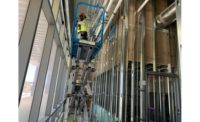Now that the pandemic is turning a corner, the big question is whether employees should return to in-person workplaces. Even though there are definite benefits to distance working, many business leaders are short-sighted about this issue. After the initial shock of working from home wore off, many employees reported that they preferred it. Not having to commute was at the top of the “Positive” column. Not only does avoiding an hour of driving each way allow more time to get work done but rush-hour commuting is rated as one of the greatest stressors for the human brain. The brain has the capacity to manage the most difficult environments to limit their impact on our mental and physical health, but the unpredictability and uncontrolled nature of rush-hour traffic eludes every trick the brain has to mitigate the effects.
Another benefit employees report is that they get more work done when not having to deal with the constant interruptions, lengthy meetings, and chaotic nature of a typical workplace. These employees report feeling more productive in a distance-working arrangement. So, with lower stress and higher productivity, why would any business leader want to bring folks back to the office? The answer is based in two realities: 1) we need to endure short-term pain to enjoy long-term gain, 2) although leaders should always seek employee feedback, you must be careful not to trust everything you hear.
Social Butterflies
Humans are wired as a social creature. Almost everything we do relies on interaction with others. New and innovative ideas are produced most often through random, unplanned interactions. Chance meetings with people, especially those outside your immediate sphere, enhance creative thinking, and create solutions to problems; solutions that evade someone working solo. This cannot happen in a Zoom-based meeting environment. Yes, there are hassles involved with going to the office. You must actually dress for work (not just from the waist up for a video conference), you have to commute, you have to navigate busy environments, and you have to sit through meetings when you would rather be finishing that spreadsheet. But, in the long run, those things end up being good for us. They not only provide vital mental stimuli, but they connect us as teams and provide much-needed spontaneous feedback.
Recently, psychologists are reporting an increasing number of patients who suffer from Cave Syndrome; or the urge to stay at home and limit outside contact. The longer people are disconnected from the outside world, the less likely they are to want to re-engage when restrictions are lifted. Lack of social stimuli can cause the brain to shut down its social interaction processes. Once someone has disconnected from human interaction, even the thought of speaking to a stranger becomes stressful. Think of the last time you chose to send an email or text when you knew that a phone call would have been a better option.
Ease Over Effectiveness
I have spoken to hundreds of employees who say that talking on the phone is one of the greatest stressors they face. Why is this the case, when not so many years ago a simple phone call was no big deal? Because we have chosen ease over effectiveness. We have allowed the comfort of the process to overshadow outcome. If we allow the urge to take the easier path to guide our business decisions, we will pay the price in the long run. Productivity may seem high, but only in terms of tasks completed, not the quality of the work performed. Retention will suffer because there will be no one to whom we remain loyal. And innovation will most surely suffer.
It is easier to be single. Your life and your schedule are your own; you answer to no one. You eat what you want and never have to argue over who controls the TV remote. But, even with all the work and hassle that goes into maintaining a long-term relationship, people with life partners report greater overall happiness and longer life spans. The reason is simple, good outcomes take work. Yes, in-person work can be a pain, and there is certainly evidence to show a blended model is worth considering, but if you want to get the real work done, being in the same room with your colleagues is worth the cost.





Report Abusive Comment